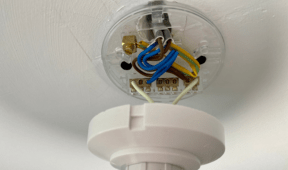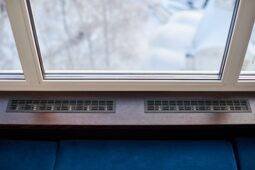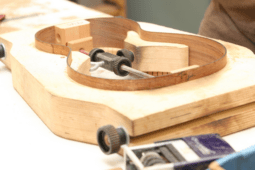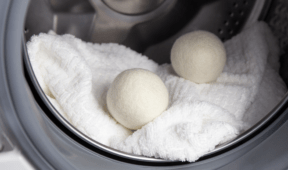How To: Memorize Any Number Using Mnemonics
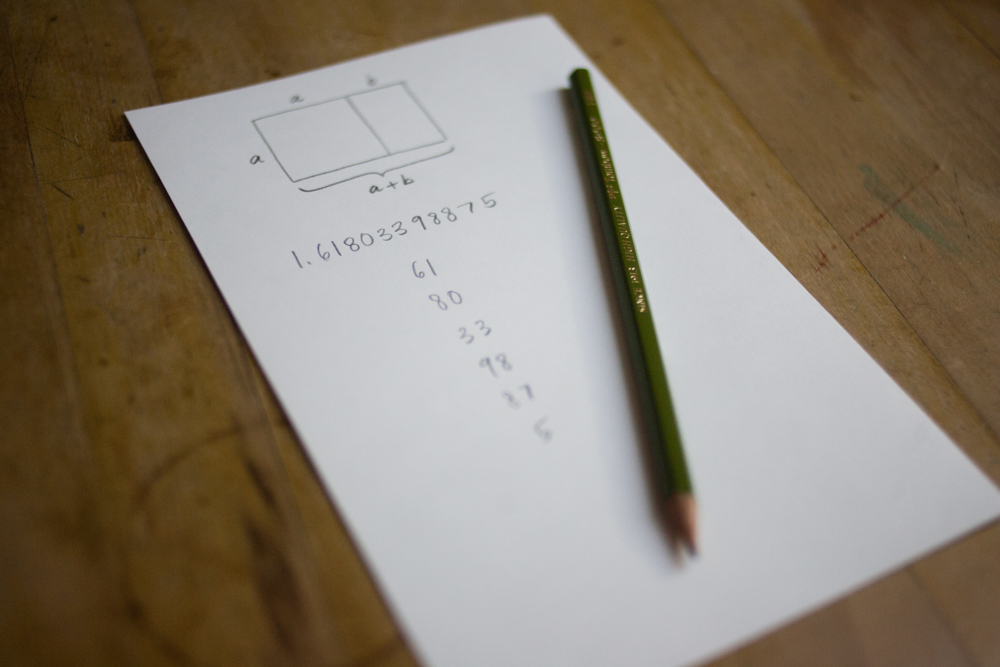
As if pens and Post-Its weren't enough, the smartphone era has provided a plethora of memory aids. Apps designed to store, sort, and spit out information whenever we want it seem to have rendered redundant the need for a good memory.
But I'm of the mind that tools work best when they augment our skills and strengths, and that when we start to allow machines to fully replace human work, we ourselves begin to atrophy. Since having begun the assembling my memorization toolkit and putting it to use in the last year, I've found that I think more clearly, remember things better, and rely on my physical and digital tools much less. (Not to mention, I'd be lying if I said it didn't feel awesome to perfectly recall a 12-digit number after less than 10 minutes' worth of work.)
We've covered one of those big tools, the memory palace, in a guide here at Man Made DIY. One of the main techniques incorporated in the article, specifically used to memorize numbers, is called the Major System; it's such a powerful in itself that it's worth its own guide.
So, let's dig in to how you can custom-tailor your own major system to help you remember long strings of numbers!
But first: why this system works
Really quickly, let's review why this works so much better than going over pure information, ad nauseum, until it sticks.
The main idea is based on this one fact: the human brain hates to be bored.
Experience shows this clearly with what we remember: even though your lifetime's worth of memories may feel random, each one stuck because your brain thought it was important. I still remember the Mentos jingle from the 90's but I don't know the dates of the James K. Polk presidency; though I can't imagine why “Nothin' gets to you, staying fresh, staying cool” would have mattered that much to an elementary schooler, it was interesting enough to stick with me for 20 years. (Apologies to Mr. Polk.)
The most important fact to remember, as you build your system, is that the more vivid the image is, the better you'll remember it. This is why memory palaces and other mnemonics work so well: they take information that's abstract or otherwise hard to remember, and they link each piece with a strong mental picture.
Enough philosophizing. Let's get cracking.
Part I: Numbers become sounds
If you've read the memory palace post, you may recall that I used the major system to encode the following numbers into corresponding mental images:
01 = zit
22 = nun
25 = nail
It seems so arbitrary. So how in the world did I come to this?
The basic building blocks of the Major System are the following 10 pairs of numbers and sounds, from 0 to 9. At first glance they seem random, but as you'll see in the notes, there's a method to the madness.
Note: I didn't actually make this up—the list below is standard among mnemonists.
• 0 = Z, S
Zero starts with “z.” Included: related “s” sound.
• 1 = T, D
The letter “T” has one downstroke, just like the number 1. Included: related “D” sound.
• 2 = N
The letter “N” has 2 downstrokes.
• 3 = M
A 3 is the letter “M” on its side.
• 4 = R
“R” is the letter at the end of 4.
• 5 = L
You can form the letter “L” with the 5 fingers of your left hand.
• 6 = J, CH, SH
The letter “J” looks like an upside-down 6. Included: related “SH” sound and “CH” sound, as in “cheese.”
• 7 = K, G
The letter “K” looks like two 7's stacked back-to-back. Included: related “G” sound, as in “goat.”
• 8 = V, F
This is silly, but I remember it because of V-8 juice. Included: related “F” sound.
• 9 = P, B
The letter “P” looks like a backwards 9. Included: related “B” sound.
This may take a little bit of practice to memorize, but rely on the notes if you're struggling. Of course, as with any mnemonic system, add any other associations that will help it stick. (The more personalized, the better you'll remember it!)
Part II: Sounds become words
Here's how we'll take our number-sound pairs to help you remember numbers.

For example, I like using the golden rectangle in my design work, so let's say I want to remember the first 11 decimal places of the Golden Ratio: 1.61803398875. Looks intimidating to memorize, right? It's not.
First, let's break down the decimal into pairs: 61 – 80 – 33 – 98 – 87 – 5. (It's already looking more friendly.)
Next, we'll use our number-sound guide from Part I to translate the number pairs into all possible sound pairs:
61 = J-T, CH-T, SH-T, J-D, CH-D, SH-D
80 = V-Z, V-S, F-Z, F-S
33 = M-M
98 = P-V, P-F, B-V, B-F
87 = V-K, F-K, V-G, F-G
5 = L
Then we'll create one vivid, image-based word per number, based on a sound pair.
Remember: the more vivid the image, the more personally it resonates with you, the better you'll recall it.
61 = (J)e(T) = jet (fighter jet)
80 = (F)e(Z) = fez (the red felt hat with the tassel)
33 = (M)0(M) = mom (the classic Sailor Jerry-style heart tattoo)
98 = (B)ee(F) = beef (a big package of ground beef)
87 = (F)o(G) = fog (smoke/fog, like from a fog machine)
5 = ow(L) = owl (Merlin's pet owl Archimedes from Disney's The Sword in the Stone)
Note: for single-digit numbers, choose a word with a single consonant.
Part III: Words become a story
Next, we'll write a really stupid story incorporating each word: jet, fez, mom, beef, fog, owl. (It's important to keep the numbers in order in your story so you'll remember them in sequence.)
Note: this technique works by itself, but if you want to anchor your images for extra reinforcement, imagine your story happening in a place you know well. (This is the basis of the method of loci that I covered in the memory palace article.) I supercharge my method of loci further by imagining a guide for my story, usually a character from a favorite movie, who carries the narrative by interacting with each of my images as he's trying to accomplish a specific goal.
For this example, I'm using my parents' old condo on the campus of Pepperdine University, which is the memory palace I created to store important numbers like bank account information, social security numbers, and even the radio reset code for my Honda Civic.
Check out the memory palace article on how to set up your own.
Since this number starts with 6, I'm working with Indiana Jones (remember that 6 = J), whose station is in the kitchen.
This is a really weird story. It's almost dreamlike, because I anchored it in reality—preparing a southern-style potluck, complete with deviled eggs and sweet tea—but mixed it with surreal images. But that's the point of memory palaces: tricking your brain into remembering information by dressing it up in memorable (i.e. bizarre) clothing.
The major system in use
As I said in my previous article, this system does take some time to set up, especially if you're new to the world of memory palaces. But what you lose by having to encode information, you gain in very quick long-term memory storage, without having to bang your head against the wall trying to memorize by constant repetition. It's an elegant process: efficient use of time in the short term, very effective in the long term.
Here's how the recall process typically works for me: let's say I need to fill in my 10-digit business bank account number online. Instead of trying to find the checkbook that I never use, or sign in to my bank account online to track down the number, I do the following:
• Mentally go into my numbers memory palace and find the story that takes place in the dining room (starring Gilderoy Lockhart from Harry Potter and the Chamber of Secrets, who wants to write a business check and goes on an adventure to find a pen)
• Isolate the 5 images in the story
• Decode the images into their corresponding 5 pairs of numbers
• Type the 10 digits into the online form
After I first set up the story in my memory palace, the whole recalling-decoding process took a little less than a minute from start to finish. I've since reviewed it about 15 times over the course of a month or so, and now it only takes about 20 seconds, which is officially faster than it takes to track down the number written down somewhere.
I've now actually gotten to the point where I don't have to review my story in great detail, but rather just the main images. I expect that soon enough, the numbers themselves will start to creep into my long-term memory, and I won't even need to remember the story. But I also know from experience that if the numbers start to slip from my memory, the story will stick, so all I'll have to do is recall my story and decode it.
Bear in mind: compared to the brute force method of having to review the information hundreds of times before it sticks, I've barely touched it since I first set it up. (If I had known about this technique in college, I guarantee you I would've been a much better student.)
One final note:
I reuse my consonant-number pairings as often as I can to avoid reinventing them every time I want to plug a number into my palace. So every time I encounter the number 98, I'll always remember that it's beef. Another example: for some reason, the number 01 shows up a lot. I usually translate as either zit or soot, depending on what the story calls for.

